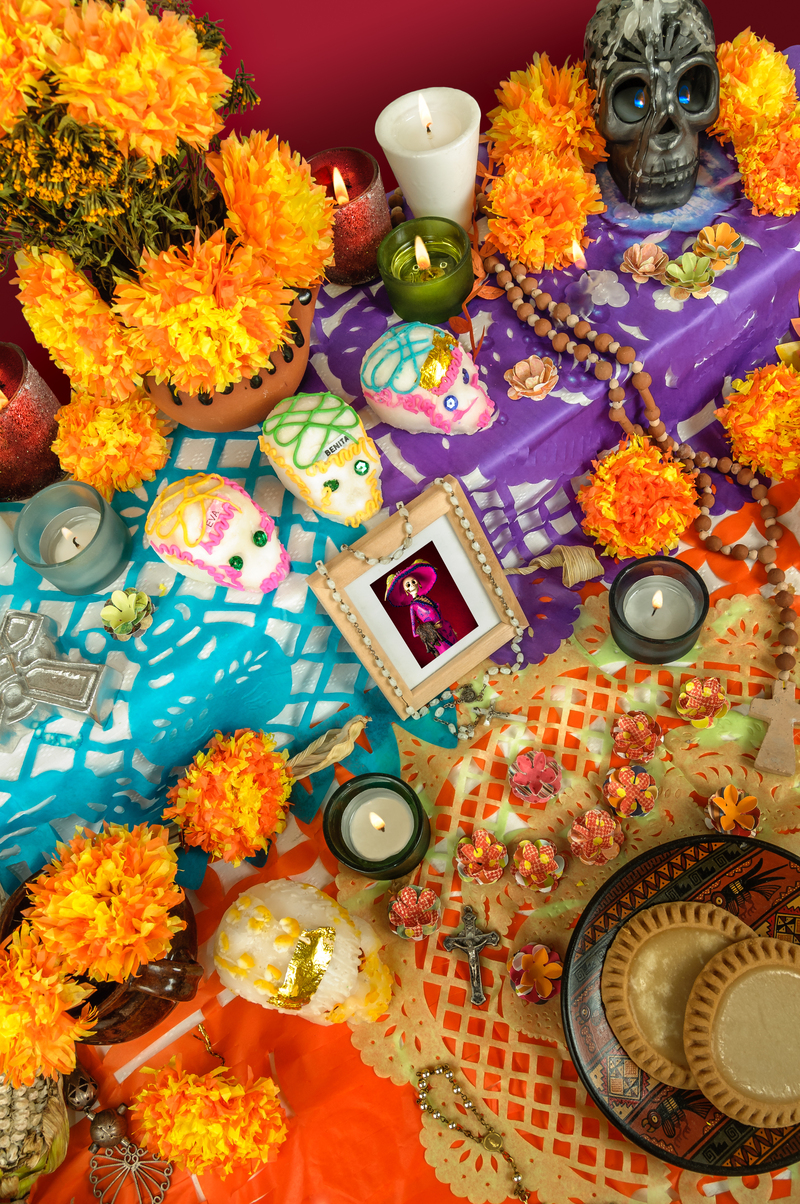Insider Tips on Extending Your Poinsettias' Bloom
Posted on 02/09/2025
Insider Tips on Extending Your Poinsettias' Bloom
Poinsettias (Euphorbia pulcherrima) are iconic holiday plants, prized for their vibrant bracts and lush foliage throughout the winter season. However, if you're like most gardeners, you may be wondering how to keep these festive blooms looking their best--long after the holidays have passed. Fortunately, it is possible to extend your poinsettias' bloom with a few expert techniques, ensuring your home remains vibrant and colorful well into the new year.
Understanding Poinsettias: Why Their Blooms Fade
To successfully prolong your poinsettias' flower display, it's crucial to understand how they grow. What we commonly refer to as poinsettia "flowers" are actually colorful bracts--modified leaves that surround tiny, yellow true flowers at the center. Various factors such as light, temperature, and care practices impact how long these bracts remain bright and beautiful.
- Photoperiod sensitivity: Poinsettias are short-day plants, meaning they require long nights and short days to develop their spectacular color.
- Environmental requirements: Drastic temperature fluctuations and improper watering can quickly dull bract color.
- Aftercare: Appropriate ongoing care is crucial for extending their bloom time.

Top Insider Tips for Extending Poinsettia Blooms
1. Purchase Healthy, High-Quality Plants
Start with the best. Extending your poinsettias' bloom begins at the time of purchase. Always select plants featuring:
- Rich green, lush foliage that extends down to the soil line.
- Vivid, unblemished bracts with firm stems and no signs of wilting.
- Compact, full structure: Avoid leggy or sparse plants.
2. Allow for Gentle Acclimation
When bringing your poinsettia home, avoid abruptly exposing it to hot or cold air. Drastic temperature changes can shock the plant and shorten bloom time. Instead:
- Transport the plant in a bag or wrap it loosely in paper when moving it from car to home on cold days.
- Let your poinsettia rest in a moderate area for several hours before placing it in its final spot.
3. Perfect the Lighting
For maximizing poinsettia bloom lifespan, position your plant in:
- Bright, indirect sunlight--at least six hours daily.
- Avoid direct sun rays that can scorch the bracts or dry out the soil too quickly.
4. Maintain Consistent Temperatures
Poinsettias prefer a consistent temperature. Ideal conditions are:
- 65-70?F (18-21?C) during the day
- 60-65?F (15-18?C) at night
- Avoid cold drafts or direct contact with heat sources, such as radiators or fireplaces.
5. Master Proper Watering Routines
Incorrect watering is the most common cause of premature poinsettia decline. To keep your poinsettias blooming longer:
- Check soil moisture daily by touching the top layer--water when slightly dry but not parched.
- Use lukewarm, filtered water and pour it until it drains out the bottom.
- Never let the plant sit in standing water; always empty saucers after watering.
- If the soil feels swampy or smells sour, reduce watering frequency immediately.
6. Humidity Matters
Central heating systems can result in overly dry indoor air, causing stresses that shorten poinsettia bloom duration. Combat this by:
- Grouping plants together to create a mini "humidity zone."
- Using a room humidifier to maintain at least 50% humidity.
- Placing your poinsettia atop a pebble tray filled with water (but not letting the pot sit directly in the water).
7. Minimize Stress and Movement
Stability is key for a long-lasting poinsettia display. Frequent relocation, changes in lighting, or drafts can trigger bloom loss. Choose a permanent spot, and avoid moving your plant except to water or rotate for light.
8. Pruning for Extended Beauty
While poinsettias do not typically require pruning during the active bloom period, removing faded leaves and spent bracts can keep the plant looking fresh and healthy. Use clean, sharp scissors and:
- Snip off any yellowing or wilting foliage at the base.
- Regularly check for pests or mold and address issues promptly.
9. Post-Holiday Care: Keeping Poinsettias Blooming After Christmas
To truly extend the bloom of your poinsettias beyond the holidays, continue ideal light, temperature, and watering routines. Additionally, consider the following tips:
- Fertilize only after blooming ends: Once new growth appears in late winter or early spring, begin monthly fertilization with a balanced, general-purpose houseplant fertilizer.
- Encourage reblooming: If you wish to keep your poinsettia for the next season, you must simulate its natural blooming conditions. In autumn (late September to early October), ensure your plant receives 14 hours of complete darkness each day for about 8-10 weeks. Place it in a dark closet or cover with a box at night, then return it to bright light during the day.
- Trim back in spring: Once your poinsettia becomes leggy, prune it down to about 6 inches to promote bushier, healthier new growth.
Common Mistakes that Shorten Poinsettia Bloom Time
Avoid these frequent errors to make the most of your poinsettia's vibrant color:
- Overwatering or underwatering
- Exposing to cold drafts or heat sources
- Insufficient or excessive light
- Neglecting humidity requirements
- Ignoring pest problems
- Failing to transition the plant properly when moving it outdoors for the summer
Season-Long Troubleshooting: How to Fix Common Poinsettia Problems
Wilting Leaves and Bracts
Most often caused by underwatering or exposure to drafts. Remedy by:
- Checking soil moisture; water as needed using the best practices outlined above.
- Moving plant away from cold windows and out of direct airflow.
Yellowing Foliage
Typically due to overwatering, poor drainage, or lack of light.
- Let the soil dry more between waterings.
- Increase sunlight exposure, but not direct rays.
- Check for saucers or foil wraps trapping excess water at the roots.
Dropping Bracts Prematurely
Often a sign of temperature shock or inconsistent care.
- Reassess position; avoid spots near exterior doors, windows, or heat vents.
- Keep a consistent care schedule.
Frequently Asked Questions About Prolonging Poinsettia Blooms
How long do poinsettias normally bloom?
With proper care, poinsettias can hold their vibrant colors for two to three months, often well into March. Following the insider tips above can sometimes stretch the display even longer.
Can poinsettias rebloom the following year?
Yes! With patience and attention to lighting cycles in fall, it is possible to rebloom poinsettias. The process involves simulating the short-day, long-night conditions that trigger bract coloration.
Is it worth keeping a poinsettia year-round?
That depends on your gardening enthusiasm. Many plant lovers enjoy nurturing their holiday poinsettias year-round as attractive green houseplants, experimenting with reblooming and propagation.

Fun Poinsettia Facts to Impress Your Friends
- Poinsettias are native to Mexico and Central America and were first introduced to the United States in the 1820s.
- Their bright colors come from bracts, not petals.
- National Poinsettia Day is December 12--a perfect time to show off your properly cared-for blooms.
- Despite common myths, poinsettias are only mildly toxic and not deadly to pets or children, though they can cause mild gastrointestinal irritation if ingested.
Final Thoughts: Extending the Joy of Your Poinsettias' Bloom
Maintaining a gorgeous poinsettia display is both an art and a science. By following these expert, insider tips--choosing a healthy plant, providing consistent care, and thoughtfully simulating natural conditions--you can extend the vibrancy of your poinsettia blooms far beyond the holiday season. Whether you're aiming to cherish your plant as a seasonal feature or embark on the challenge of reblooming, remember that attentive, proactive care is the key to success.
With a little dedication, you can enjoy stunning poinsettia blossoms and lush foliage for months to come--making every winter brighter, year after year!
```Latest Posts
Insider Tips on Extending Your Poinsettias' Bloom
Expose 3 easy-to-follow methods for preserving your cherished blooms
8 Lesser-Known Sunflower Facts That Will Intrigue You






